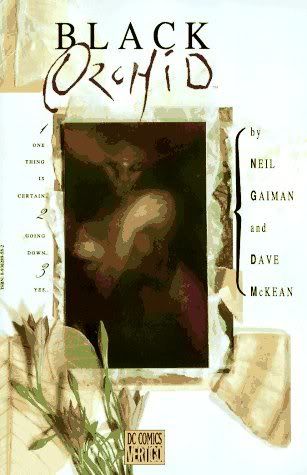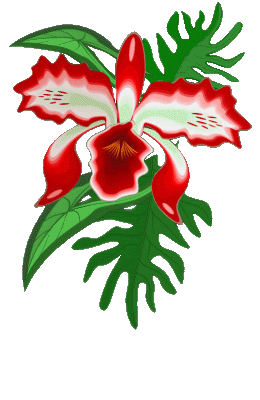How many of you knew that we Orchid ... er, um ... "enthusiasts" have (had) our very own Super Hero?

Sheldon Mayer is the cartoonist who created Sugar & Spike and Scribbly, but he's far more than just that. He was also an editor who helped mold DC Comics in its early days, and possibly the creator of The Justice Society of America itself. Decades later, he dabbled in scripting, and not just in the kind of stories he's known for. The Black Orchid is his character, even if his brush never touched her.
The Black Orchid didn't seem to have a secret identity — at least not one she used on a regular basis. Her usual method was to get a job with an organization she suspected of criminal activity, so as to get the goods on them. When she had enough, or things went critical, she'd switch to her Black Orchid costume and wreck the place, including the identity she'd used to infiltrate it. She had the usual super powers — could fly, ignore bullets and "bend steel in her bare hands". Where she got them was never mentioned. If she had a personal life, readers never saw it.
The Orchid first appeared in the 428th issue (June, 1973) of Adventure Comics, which had recently ended a 27-year run in which it gave star billing to nothing but Superman spin-offs. In fact, she was the first superhero to debut as the cover feature of that title since Starman, back in 1941. Mayer's script was illustrated by Tony DeZuñiga (Jonah Hex). The cover artist was Bob Oksner (Angel & the Ape). The same three did those jobs in the next two issues, after which she was replaced by a new series starring The Spectre.
Since her logo was larger than the title itself, the three Black Orchid issues of Adventure could have functioned the same as a run in Showcase or The Brave & the Bold during the previous decade — a trial run, to see how she'd do in her own comic. If so, her response was like that of Hawkman or Space Ranger — good enough to warrant a series, but not a title of her own. She was next seen in the back pages of The Phantom Stranger #31 (July, 1974). Mayer and DeZuñiga did only the first one. Under other hands, she didn't last long — #41 (March, 1976) was her last appearance there. After that, it was a very infrequent series of guest shots. The most prominent play she got was when she turned up on the cover of a 1980 issue of Super Friends.
She was so obscure, in fact, that when, in the late 1980s, writer Neil Gaiman (The Sandman) expressed an interest in exploring the mysteries that surround her, at least one DC editor had never heard of her. The company had no problem with giving him control of such a commercially unviable character. In her first and only Gaiman-written appearance, Black Orchid #1 (1988), she was caught by one of the companies she infiltrated, captured, and burned to a cinder. And that was the end of her.
The rest of Gaiman's three-issue Black Orchid mini-series concerned the origin of the new Black Orchid. Along the way, readers finally found out where the old one, who turned out to be a genetically-engineered hybrid of a human with a real orchid, came from.
The Black Orchid (1973) - Don Markstein's Toonopedia
Just thought I would pass this along for grits and shins.



































 Linear Mode
Linear Mode


